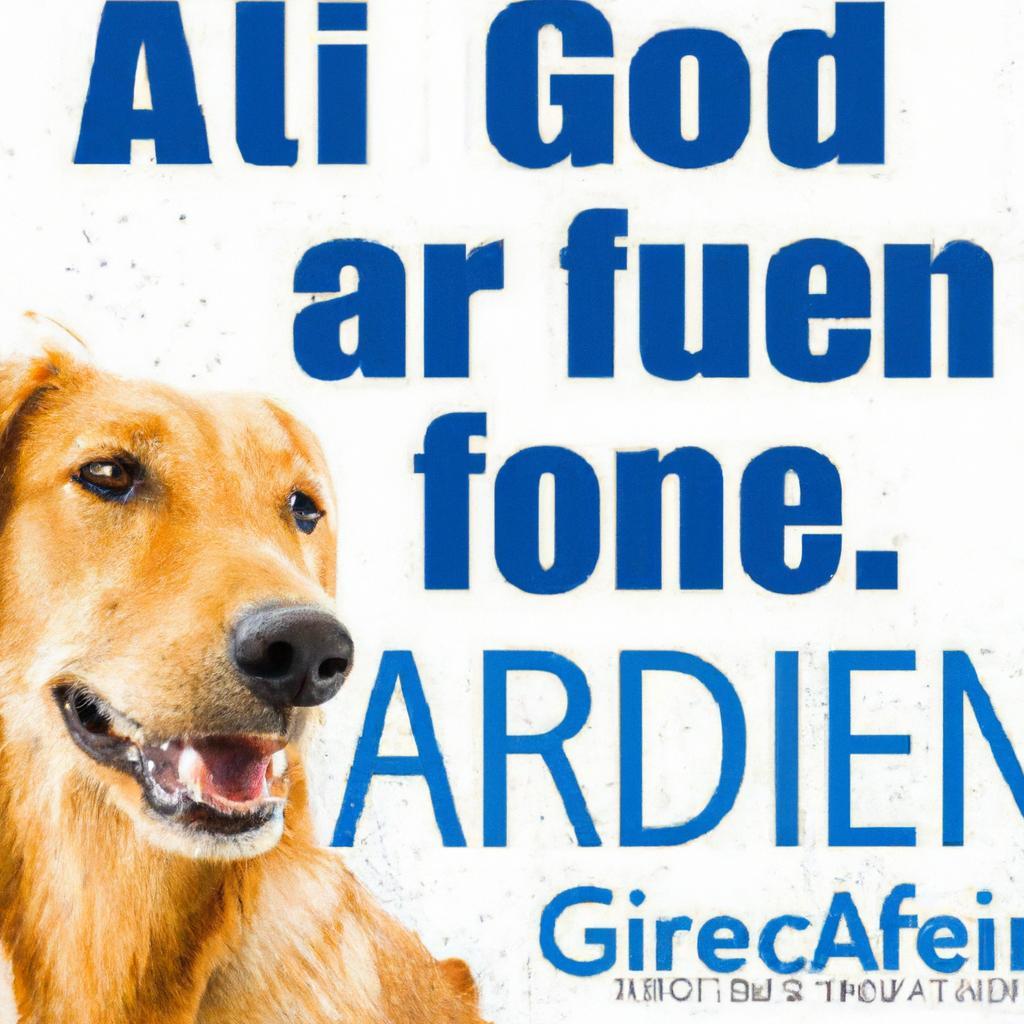When Bella, a lively golden retriever, suddenly developed itchy skin and digestive issues, her owner, Sarah, was baffled. After switching to a trendy grain-free diet, Bella’s symptoms worsened. Sarah learned that grain-free foods often contain alternative ingredients like peas and lentils, which can trigger allergies in sensitive dogs. With the help of a veterinarian, Sarah transitioned Bella back to a balanced diet, and soon, her fur regained its shine, and her energy returned. Remember, not all diets suit every dog—consult a professional before making changes.
Contents
- Understanding the Potential Allergenicity of Grain-Free Dog Foods
- Identifying Symptoms of Allergies Related to Grain-Free Diets
- Evaluating Nutritional Balance in Grain-Free Formulations
- Expert Recommendations for Transitioning to Grain-Free Options
- Q&A
Understanding the Potential Allergenicity of Grain-Free Dog Foods
As pet owners increasingly turn to grain-free diets for their dogs, it’s essential to understand the implications these choices may have on their health. While grain-free dog foods are often marketed as a healthier alternative, they can inadvertently introduce new allergens into your dog’s diet. Ingredients such as peas, lentils, and potatoes, which are commonly used in grain-free formulations, can be problematic for some dogs, leading to allergic reactions or sensitivities.
Many dogs may not have been exposed to these alternative ingredients before, making them more susceptible to developing allergies. **Common symptoms** of food allergies in dogs include:
- Itchy skin or rashes
- Gastrointestinal upset
- Ear infections
- Excessive licking or chewing at paws
Recognizing these signs early can help you identify whether your dog is reacting to their grain-free diet. It’s crucial to monitor your pet closely after introducing any new food, especially those that replace traditional grains with legumes or tubers.
Moreover, the nutritional balance of grain-free diets can sometimes be compromised. Many grain-free options are high in carbohydrates and low in essential nutrients, which can lead to deficiencies over time. **Consulting with a veterinarian** can provide insights into whether a grain-free diet is appropriate for your dog, considering their unique health needs and potential for allergies. A tailored approach ensures that your dog receives a balanced diet that minimizes the risk of allergic reactions.
Ultimately, the decision to switch to grain-free dog food should be made with careful consideration. While some dogs thrive on these diets, others may experience adverse effects. **Conducting a gradual transition** and keeping a detailed food diary can help you track any changes in your dog’s health, allowing for informed decisions about their dietary needs. Remember, every dog is different, and what works for one may not work for another.
Identifying Symptoms of Allergies Related to Grain-Free Diets
When considering the impact of a grain-free diet on your dog, it’s essential to be vigilant about potential allergic reactions. Dogs can exhibit a variety of symptoms that may indicate an allergy, and recognizing these signs early can help you make informed dietary choices. Common symptoms to watch for include:
- Itchy Skin: Persistent scratching, biting, or licking at the skin can indicate an allergic reaction. Pay attention to areas like the paws, ears, and belly.
- Gastrointestinal Issues: Vomiting, diarrhea, or excessive gas can be signs that your dog is reacting negatively to their food.
- Ear Infections: Frequent ear infections or inflammation can be a result of food allergies, particularly in dogs on a grain-free diet.
- Red or Watery Eyes: Allergies can cause conjunctivitis, leading to redness and discharge from the eyes.
In addition to these physical symptoms, behavioral changes may also signal an allergic reaction. Dogs may become more irritable or anxious, displaying signs of discomfort or distress. If your dog seems unusually restless or is having trouble settling down, it could be worth investigating their diet further. Observing these behavioral shifts can provide crucial insights into their overall well-being.
Another critical aspect to consider is the timing of these symptoms. If you notice a correlation between the introduction of a grain-free diet and the onset of allergic reactions, it may be time to reevaluate your dog’s food. Keeping a detailed food diary can help you track changes in your dog’s health and behavior, making it easier to identify potential triggers.
consulting with a veterinarian is paramount if you suspect your dog is experiencing allergies related to their diet. A professional can conduct tests to determine the specific allergens and recommend appropriate dietary adjustments. Remember, a grain-free diet may not be suitable for every dog, and understanding your pet’s unique needs is essential for their health and happiness.
Evaluating Nutritional Balance in Grain-Free Formulations
When considering grain-free diets for dogs, it’s crucial to assess the nutritional balance of these formulations. Many pet owners are drawn to grain-free options under the impression that they are healthier or more natural. However, the absence of grains does not automatically equate to a superior diet. In fact, a well-rounded nutritional profile is essential for maintaining a dog’s overall health and well-being.
Grain-free dog foods often rely on alternative carbohydrate sources such as potatoes, peas, and lentils. While these ingredients can provide energy, they may not offer the same level of essential nutrients found in whole grains. It’s important to ensure that the formulation includes a variety of protein sources, healthy fats, and vitamins to support your dog’s specific dietary needs. A lack of diversity in ingredients can lead to deficiencies that may compromise your dog’s immune system and overall vitality.
Moreover, the potential for allergies or sensitivities can increase when dogs are fed grain-free diets that heavily feature a limited range of ingredients. Many grain-free products utilize high levels of certain proteins, such as chicken, beef, or fish, which can trigger allergic reactions in some dogs. Therefore, it’s vital to monitor your pet’s response to these diets closely and consult with a veterinarian if any adverse reactions occur. A balanced diet should minimize the risk of allergies while providing all necessary nutrients.
while grain-free diets may seem appealing, they require careful evaluation to ensure they meet your dog’s nutritional needs. Always look for formulations that offer a comprehensive blend of ingredients, including a variety of protein sources and essential nutrients. By prioritizing nutritional balance, you can help safeguard your dog’s health and reduce the likelihood of developing food-related allergies.
Expert Recommendations for Transitioning to Grain-Free Options
Transitioning your dog to a grain-free diet can be a beneficial choice, but it’s essential to approach this change thoughtfully. **Consulting with a veterinarian** is crucial before making any dietary adjustments. They can help determine if a grain-free diet is suitable for your dog’s specific health needs and can guide you on how to implement the transition safely.
When you decide to switch to grain-free options, **do so gradually**. Start by mixing a small amount of the new grain-free food with your dog’s current diet. Over the course of a week or two, gradually increase the proportion of the new food while decreasing the old. This slow transition helps to minimize digestive upset and allows your dog’s system to adjust to the new ingredients.
Pay close attention to your dog’s reaction during the transition. **Monitor for any signs of allergies or sensitivities**, such as itching, gastrointestinal upset, or changes in behavior. Keeping a journal of your dog’s food intake and any symptoms can be helpful in identifying potential issues. If you notice any adverse reactions, consult your veterinarian immediately to reassess the diet.
consider the **quality of the grain-free food** you choose. Not all grain-free options are created equal; some may contain high levels of fillers or low-quality ingredients. Look for brands that prioritize whole, natural ingredients and have a good reputation. Reading reviews and seeking recommendations from other pet owners can also guide you in selecting the best grain-free diet for your furry friend.
Q&A
-
Can grain-free food cause allergies in dogs?
Yes, grain-free food can potentially cause allergies in dogs. While many owners believe that eliminating grains reduces allergy risks, some dogs may develop sensitivities to alternative ingredients commonly found in grain-free diets, such as peas, lentils, or potatoes.
-
What are the signs of a food allergy in dogs?
Signs of food allergies in dogs can include:
- Itchy skin or excessive scratching
- Ear infections
- Gastrointestinal issues, such as vomiting or diarrhea
- Red or inflamed skin
If you notice these symptoms, consult your veterinarian for proper diagnosis and treatment.
-
Is grain-free food suitable for all dogs?
No, grain-free food is not suitable for all dogs. While some dogs thrive on grain-free diets, others may require grains for balanced nutrition. It’s essential to consider your dog’s specific health needs and consult with a veterinarian before making dietary changes.
-
How can I determine if my dog has a food allergy?
To determine if your dog has a food allergy, consider the following steps:
- Keep a food diary to track your dog’s diet and any symptoms.
- Consult with your veterinarian for allergy testing or an elimination diet.
- Monitor your dog’s response to dietary changes closely.
Working with a professional will help ensure your dog receives the best care and nutrition.
while grain-free diets may seem beneficial, they can inadvertently trigger allergies in some dogs. It’s crucial to consult with a veterinarian before making dietary changes, ensuring your furry friend receives the best nutrition tailored to their needs.

大家好,我是彼得潘,專業的手法身體治療師。我喜歡探索和研究各種主題,並透過與人工智慧的合作分享專業、實用、有趣的文章。我們定期進行人工審核,以確保內容的準確性。如果您發現文章中有任何不準確的地方,請隨時與我們聯繫,我們會及時糾正。您可以透過 [email protected] 與我們聯繫。



